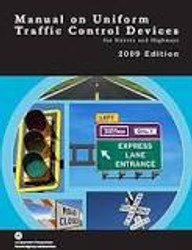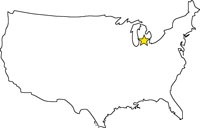MUTCD Frequently Asked Questions
9th May 2018
The Manual on Uniform Traffic Control Devices (MUTCD) contains information relating to national application, placement and design of traffic control devices. It also includes standards, guidance, options and support provisions. The MUTC, published by the Federal Highway Administration (FHWA), promotes highway safety and efficiency through uniformity. We’ve compiled some of the most commonly asked FAQs.
Is the MUTCD law?
It is a national standard for design, application and planning traffic control devices.
To what roadways does the MUTCD apply?
All roadways in the U.S., inclusive of streets, highways and bicycle lanes open to public travel. It does not apply to parking areas, driving lanes within parking areas or private highways.
Are MUTCD standards updated regularly?
The FHWA intends to update the manual every five years; however that is not a mandatory timespan. The Federal Register rulemaking process must adopt all MUTCD revisions and new editions.
What is the definition of “private roads open to public travel”?
According to Definition 159 in Section 1A.13, this group includes roads within shopping centers.
How is MUTCD enforced for private roads?
These roads are subject to the same standards as public roadways. State or local highway agencies are not enforcers, rather, the FHWA expects responsible parties to ensure their property is in compliance.
Do states have MUTCD, or is the only version a federal one?
States can have their own MUTCD. Title 23 of the Code of Federal Regulations directs that any states do one of these three things within two years after a new national MUTCD issuance or amendment.
Adopt the new or revised national standard for traffic control devices in their state.
Adopt the national standard with a state supplement in conformance with the new or revised standards.
Adopt a State MUTCD in conformance with the new or revised national standards.
What Federal Register contains all the new standard compliance dates?
The Federal Register of December 16, 2009, contains the final rule adopting the 2009 MUTCD standards. You can find it on the MUTCD website here.
In cases of compliance dates, do new installations have to comply with the new provision until that date?
No, all new or reconstructed devices installed any time after a new MUTCD is adopted must be compliant with new MUTCD provisions, regardless of whether or not there is a compliance date. These dates apply to existing devices that don’t meet MUTCD standards.
Is there a penalty for not meeting a compliance date?
This could result in the loss of Federal aid funds. Tort liability may also apply, more so in situations where an accident occurs due to inadequate or noncompliant devices.
What role does the National Committee on Uniform Traffic Control Devices (NCUTCD) play?
The NCUTCD, a private organization, does not have an official association with the Federal government. The membership consists of 250 traffic control device experts. They represent many different groups that have an interest in traffic control devices. Many are employees of state and local agencies involved with operating highways or streets. This volunteer committee meets twice annually for discussions on the MUTCD and to decide on recommendations. These recommendations are submitted to the FHWA. Learn more on their website.
Is there a document that offers a comparison between the 2003 and 2009 MUTCD?
Yes, the MUTCD has developed content to highlight the differences. This includes details and examples. You can find the information here.
Why does the MUTCD not include speed bumps?
These parts of roadways are considered physical features rather than traffic control devices. Thus, the MUTCD does not have jurisdiction over these elements, even though they do play a role in speed safety. The Institute of Transportation Engineers publishes technical guidance on speed humps. Note that any signs or markings indicating the presence of a speed bump are dictated by the MUTCD.
For signal installations, what other factors beyond numerical signal warrants should be considered?
Section 4C.01 states that an engineering study should be completed with analysis of those warrants. Warrants can begin the process, but do not on their own make the decision to install.
If numerical signal warrants are not met, should a signal be installed?
Most of the time, there is no cause for a signal. Some special cases would still need a signal if an engineering study finds probable cause.
How is data measured and collected for Warrant 3, the Peak Hour Warrant?
The number of vehicles on the approach are counted. Either the average delay per vehicle or the total delay encountered by all vehicles during peak hours, are measured and recorded.
How are numbers for Pedestrian Volume and School Crossing calculated?
The Pedestrian Volume warrant (Warrant 4) was revised in 2016 based on research. The School Crossing warrant (Warrant 5) was added to the MUTCD in 1971.
What is a “yellow trap”?
The "yellow trap" is a possible adverse safety situation that exists in some signal phasing sequences. It involves a lagging left turn. The turning driver is waiting for oncoming traffic to slow for the opportunity to turn left. The signal then changes from green to yellow, with the driver assuming that oncoming traffic also has a yellow. Actually, the oncoming traffic continues on with a green light. This can be a safety concern.
What sign should be used to inform drivers what a flashing yellow arrow means?
There is no standard in the MUTCD for this situation. Research indicates no signage is necessary. The research found that the flashing yellow arrow is obvious to drivers.
Per MUTCD, the duration of the yellow change interval should be 3 to 6 seconds. How is the actual length determined?
As vehicle laws vary by state, and conditions vary by intersection approach, engineers must use their best judgment in deciding on the length of the yellow interval. This is documented in the Institute of Transportation Engineers (ITE) guidelines.
Are the ITE formulas the only "engineering practices" available to calculate the duration of yellow change and red clearance intervals?
The MUTCD presents ITE as examples of how to use engineering practices. The FHWA states that these formulas should be a starting point. The yellow change interval is derived by the speed of approaching vehicles, the stopping ability of approaching vehicles and the grade on the approach.
These are just some of the most popular FAQs. The MUTCD is a long, complex document with many areas of interpretations. Find the complete MUTCD manual here.




